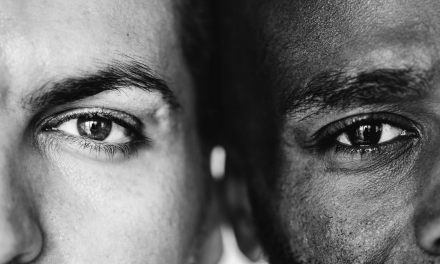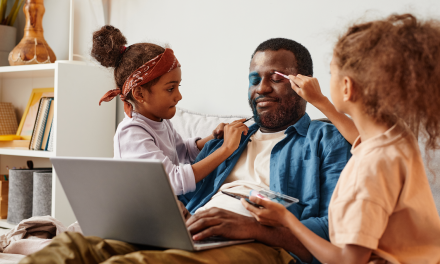The exhaustion is real and goes deep. Shootings of unarmed Black and brown men and women by police officers forever change the lives of their families or close relations. But the ripple effect reaches the heart of communities. And sometimes, the emotional, mental and physical toll leaves individuals grappling with feelings of fear, anger, rage, grief, pain. There is a sense of isolation, depression, desperation, and hopelessness.
This “racial battle fatigue” stems from being exposed to constant racism, discrimination, stereotypes, and microaggressions. Individuals grow tired and are on guard for the next attack. Dismissive, demeaning, insensitive, or hostile words and actions can eventually cause physical reactions like sleeping disorders, tension headaches, irritability, and loss of appetite.
Trying to deal with the trauma, whether extreme or subtle, direct or indirect, becomes a painful process. Seeking help can be a lifeline. “The need for psychological treatment has escalated,” explains Dr. Ana Nogales, of Nogales Psychological Counseling, Inc. Her clinical staff of about 30 bicultural-bilingual mental health professionals treat underserved populations, women, and teenagers.
People of color face even more issues that add fuel to the fire, and fatigue can become all-consuming.
The coronavirus pandemic crippled Black and brown communities, bringing to light disparity in medical access and treatment. A National Institute of Mental Health report revealed that, “Black people face increased rates of risk factors, including experiences of racism, higher rates of unemployment and financial and food insecurity, disparities in other aspects of health, and limited access to care, all of which result in an increased burden of mental illness in black communities… As of 2018, suicide became the second leading cause of death in Black children aged 10-14, and the third leading cause of death in Black adolescents aged 15-19.”
For Latinx communities, another layer of sweeping generalizations and stereotypes adds to the fatigue. Although Latinos come from many different countries and speak a variety of Spanish dialects and other languages, they are lumped together and negatively targeted in the media as foreigners, criminals, intellectually inferior, and threats. That trickle-down effect hits them in their relationships and communities, at work, school, and life. “Anxiety and depression have increased tremendously in the Latinx community,” says Nogales. “We know we have the highest number of adults in any ethnic group who have considered suicide in the last thirty days.”
Despite this weight bearing down on them, people of color are less likely to seek help or access treatment even though they may desperately need help to cope with a situation, improve their mental well-being, and start healing.
Mental Health and the Fear of Stigma
Black and Latinx individuals hesitate to seek mental health therapy because of myths and stigmas associated with it. In 2004, Dr. Walter Brown founded L.A. Peace of Mind, a psychotherapy and wellness center in Los Angeles for people of color and marginalized people and communities. In more than 20 years of practice, he has seen great disparity in resources for the Black community and that can perpetuate the stigma of mental health therapy. “We don’t have full representation in the health system,” says Brown. “Unfair judgments about an individual’s conditions and treatments were often made based on culture, race and social justice issues.”
Black people are more frequently diagnosed with schizophrenia and less frequently diagnosed with mood disorders, compared with whites with the same symptoms. According to the National Alliance on Mental Illness (NAMI), 63% of Black people believe that a mental health condition is a sign of personal weakness. As a result, the way they express symptoms of emotional distress may contribute to misdiagnosis.
Many Latinx and Black individuals rely on extended family, community, traditional healers, or churches for help during a mental health crisis. They see a psychologist’s suggestions for self-care as selfish and won’t pursue that treatment. “They feel much more confident when they can seek services in church and talk to pastors or priests because they trust them and feel they will understand them much better,” explains Nogales.
In the book, The Unapologetic Guide to Black Mental Health, Dr. Rheeda Walker explains even though being of African ancestry meant there was always a connection to culture, “The collective goal was survival…We won’t reach out for help because we stand together in our pain. Your pain doesn’t register as a crisis.”
Family and religion can offer help or comfort, but professional assessments can provide an unbiased lifeline. Therapists of color might help patients get past the stigma of mental health treatment and offer solutions, strategies, and tools to help with the process of healing.
Benefits of Seeking Therapy from a Therapist of Color
The mission of most therapists of color is to provide high quality mental health care by being aware and informed of societal and cultural issues in a sensitive and nonjudgmental way. Understanding a cultural background can sometimes allow them to cut to the chase quicker, get to the heart of the issue at hand and offer some relief—and hope. “We have a sense of advocacy for the clients and a clear understanding of what they’re going through, in addition to a clinical perspective,” explains Brown. “If there is a connection and a feeling of trust, there will be a better outcome for mental wellness.”
Even though 87% of psychologists are white, according to the APA, 32% of psychology doctorates earned in 2016 were awarded to racial/ethnic minorities. There seems to be a push to pool together resources and provide directories of therapists of color, such as Black Virtual Wellness Directory, Sista Afya Community Mental Wellness, Therapy for Black Men, Therapy for Black Girls, Therapy for Latinx, Latinx Therapy, and Brown Girl Therapy for children of immigrants.
Brown believes empathy also goes a long way since mainstream therapists might not know the layers and nuances of a case. “We have a better sense of how we, as family, learn—mostly through storytelling, symbolism, and relationships. In mainstream therapy, there is analysis, quantitative reckoning, and stats, but how do we interpret those stats in a way the client will understand?”
Even though white therapists can be trained to be culturally sensitive, race dynamics can play a role in the comfort level of revealing feelings and deep-rooted issues. A white therapist can be seen as an oppressor of his community, says Brown. “A patient might ask, ‘Does this person understand they have a privilege I don’t have? Resources I don’t have? Support I don’t have? The client has this reality of concerns.”
For Latinx patients, being able to speak to a therapist in their own language is vitally important. They use mental-health services far less than other ethnic and racial groups or quit therapy often because they feel misunderstood. Language and cultural barriers can be a big part of that. The lack of interpreters and bilingual professionals can skew evaluation, treatment, and emergency response.
For a patient, the language barrier is a lot of work and can be frustrating, says Nogales. Their feelings can get lost in the translation. “You have to feel it, spell it out in your own language, and then translate it. It cuts off the expression of feelings.” Using interpreters doesn’t always work because people have to explain in two languages, are susceptible to misinterpretation, or won’t be as candid with their emotions if someone else is in the room.
Different Approaches and Venues Offer Accessibility
Besides language compatibility, different approaches and venues can reach underserved populations and give them a safe space to talk about what they’re feeling and going through. “What’s offered by the counties sometimes are not so friendly,” says Nogales. The buildings look like hospitals or institutions, which reinforces the stigma about mental health.”
Nogales has been a steady presence in the media—on radio shows, television shows, and podcasts. She’s written books, plays, and music to talk about mental health issues and problems in the community in a less intimidating way. “We are able to educate so many by talking about issues they never talk about, discussing myths and misunderstandings, doing role playing, and opening up the opportunity to talk about mental health in a positive way.”
She also founded Casa de La Familia, which provides a haven for women and children and underserved populations and allows them to talk about their situations. “That’s where they need us the most. We work with victims of trauma, domestic violence, sexual assault, child abuse, and human trafficking at free or low cost, and have empowerment programs for teen Latinx.”
A positive effect of the pandemic was how telehealth came into the picture and brought with it accessibility, says Nogales. Being able to use phone or video conferences offers options. “I believe when we provide the correct venues for treatment, we can make a difference to reach people where they feel most comfortable.”
As for patients, even if they are in a fragile state of mind, if they can, they should take time to “interview” a potential therapist to see if they click. They can ask potential therapists questions to get a sense of their level of cultural awareness. Ask whether they have received training in cultural competence for Black mental health. Ask how they see cultural backgrounds influencing client-patient communication and treatment. Ask if they truly understand the differences in health outcomes for Black and Brown patients.
It can take a few sessions to see whether the therapist aligns with a patient’s concerns, says Nogales. At the end of a session with the health care professional, a patient should feel heard and respected for who they are, their beliefs, identity, and cultural background. If not, then move on to the next therapist—but don’t stop seeking treatment.
Some Rest for the Weary
With the rampant, nonstop hate, pain, and injustice inflicted on people of color and their communities, taking control of individual well-being is a start. “Get rid of the myths,” says Brown. “If you need mental health treatment, you’re not crazy.”
Psychotherapy is a tool and a potential lifeline. If people can think about mental wellness instead of mental illness, perhaps they can take care of themselves without guilt or fear.
“You don’t have to live in pain,” says Nogales. “You don’t have to be suffering. You can have access to services and to new possibilities of having a better life, a healthy life, a dignified life.”








